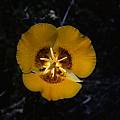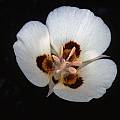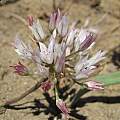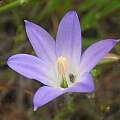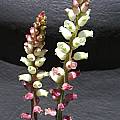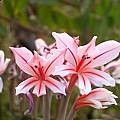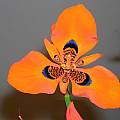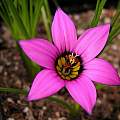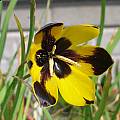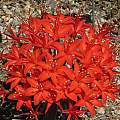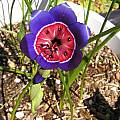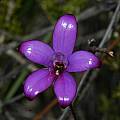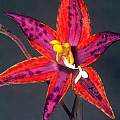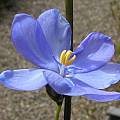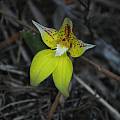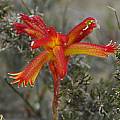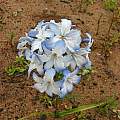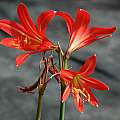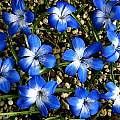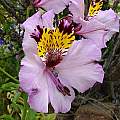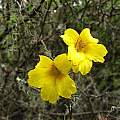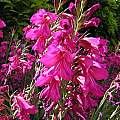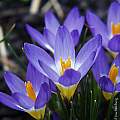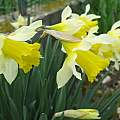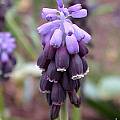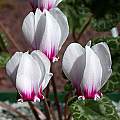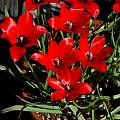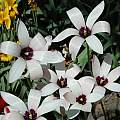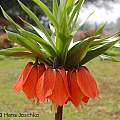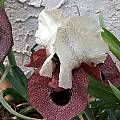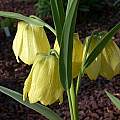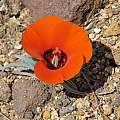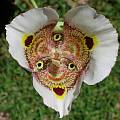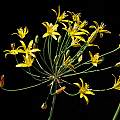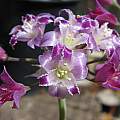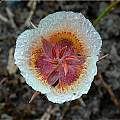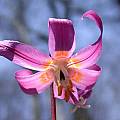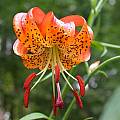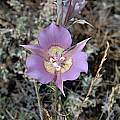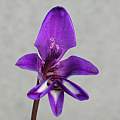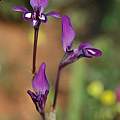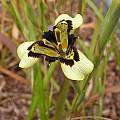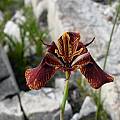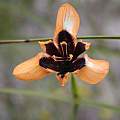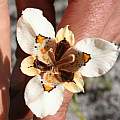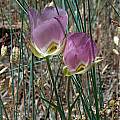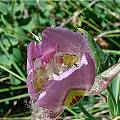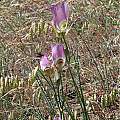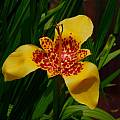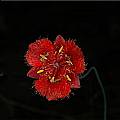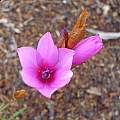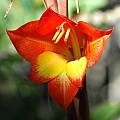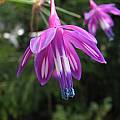Please note that this page has been replaced by a new version with updated maps and more detailed information. We're leaving this old version of the page intact for the moment, because Google ranks it highly. But if you come to this page often, please change your bookmark to the new page.
Click here to go to the new Summer-Dry Climate Maps page.
A majority of the species we think of as "bulbs" are native to a summer-dry climate, something that's also called the "mediterranean" climate. But what exactly is that climate, and what does it tell us about growing bulbs? The answer turns out to be surprisingly complicated...
What is a mediterranean climate?
At first glance that's a stupid question. We all know what a mediterranean climate is -- it's dry warm summers and cool wet winters. That's like asking what a mountain is; we all know one when we see one.
Or do we? In the eastern United States, the Appalachians are a mountain range. In northern India they'd be foothills. We have a similar problem with mediterranean climates. For example, the "mediterranean" weather in parts of Italy has ten times more summer rain than "mediterranean" southern California. The same variation happens with winter cold -- parts of mediterranean South Africa barely get any frost at all, while frost and even hard freezes are common in much of mediterranean Chile and California. Some bulb-rich places with dry summers don't even qualify as officially mediterranean because they're too cold in winter or too dry overall.
Lee Poulsen put a lot of work into this subject several years ago, and produced some fantastic charts comparing rainfall in various "mediterranean" cities. Check out the graphs by clicking here.
I'm convinced that many of our struggles to grow summer-dormant bulbs come from an assumption that everything "mediterranean" needs the same treatment. It's not true. You'll have a better chance of succeeding with a bulb if you know the particular type of summer-dry climate a bulb comes from.
Comparing the world's "mediterranean" climates
I created 28 summer-dry climate zones, so we could easily compare climates from one region to another. The zones depend on two variables: the severity of the summer drought, and the depth of winter cold.
Let's start with a chart of the zones, then I'll explain them:
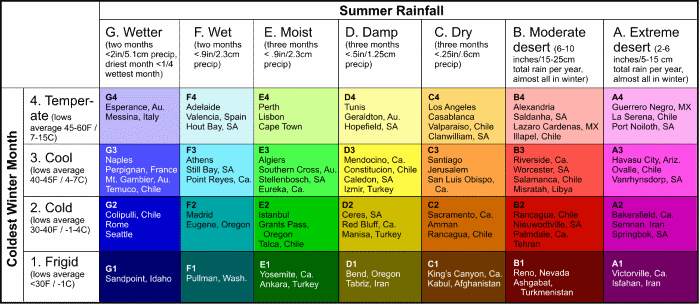
Click here to see a larger version of the chart.
Dark colors in the chart correlate to temperature: the darker the colors are, the colder a place gets in winter. Hue indicates summer rain: reds and purples are the driest areas in summer; greens and blues are the wettest. So an area that's dark purple is a very cold, very dry desert (think Afghanistan); light purple is a dry, warm desert (Baja California).
Combine the four cold temperature zones with the seven rainfall zones, and you get a total of 28 summer-dry zones. Because we've included deserts and areas with cold winters, the zones extend beyond the traditional mediterranean areas of the world. A climatologist might be annoyed, but this broader set of zones corresponds much better to the world's summer-dry bulb climates.
Click here for a detailed explanation of the chart
"Desert." The exact definition of desert varies from expert to expert, but a typical definition would say a desert is anyplace that gets less than 10 inches (25 cm) of rain a year. When growing bulbs, you need to differentiate between moderate deserts (zone B, 6-10 inches of rain a year) and extreme deserts (zone A, 2-6 inches). I've found that bulbs from moderate desert areas are often fairly adaptable to cultivation. But bulbs from extreme deserts often require very careful handling. Note that the maps include only deserts that get most of their rain in winter. Places that have erratic or summer rain were excluded.
"Summer rain." The idea here is to measure roughly how dry the summer is and how long the drought lasts. Zones C, D, and E have at least three months in summer with low rainfall. The wettest of these three months is what classified the climate. So, for example, if a city gets rainfall of .1 inch (.25 cm), .1 inch, and .3 inch (.75 cm) in the three driest months, it gets classified as zone D.
Those three zones worked very well for classifying the traditional mediterranean climate areas of California and Chile, but when applied to other regions there were problems. Many bulb-growing areas in South Africa and Europe were not included because they get too much rain in summer. So I added zones F and G, which have two relatively dry months in summer. Zone F has two months with less and .9 inches (2.3 cm) of rain per month in summer. Zone G has two months with less than two inches (5 cm) of rainfall per month in summer, with an added requirement that the driest month must have less than 1/4 the rainfall of the wettest month. In zones F and G, summer isn't completely dry, it's just drier than the rest of the year.
Winter cold. Although temperatures can vary infinitely, there are four basic situations you can be in relative to winter cold. I turned those into four "cold zones:"
Cold zone 4: No frost. The bulb almost never sees freezing temperatures.
Cold zone 3: Light frost. The bulb experiences light frost in some winter nights, but almost never an extended freeze.
Cold zone 2: Heavy frost. The bulb regularly gets frost in the winter, and occasionally experiences a serious freeze (in which the surface of the soil gets hard).
Cold zone 1: Frozen. The soil surface regularly stays frozen in winter, often with snow cover. Many bulbs native to this climate are dormant or near-dormant in mid-winter, growing in the spring.
(Note that these zone numbers were made up by me and are not to be confused with the USDA climate zones.)
Bulbs from Zone 4 may be damaged by light frost, and can be killed in colder areas if not protected. Bulbs native to zone 1 may need winter refrigeration if grown in warmer areas.
Rainfall is even more variable. Here's an example: San Diego, California (home to some very handsome native bulbs) typically gets five to six months every summer with virtually no rain at all. Hermanus, South Africa, also a notable bulb center, normally gets a four month dry spell in summer, but even in that period averages at least half an inch (17 mm) of rain per month. Four months of dryness versus six; half an inch of water a month versus no water at all. Whether you're growing bulbs in pots or in the ground, those are very different conditions.
Some notable bulbs from San Diego
Some notable bulbs from Hermanus
To account for all the variations in rainfall, I made up seven winter rainfall zones. Zones A and B are officially deserts (less than 10 inches of rain per year), with most of their rain falling in the winter. Zone C and D have relatively long summer droughts with very little summer rain in an average year. Zones E, F, and G have shorter summer droughts, with some summer rain.
Zone A. Severe desert. 2-6 inches (5-15 cm) of rain all year, with most of it in winter.
Zone B. Moderate desert. 6-10 inches (15-25 cm) of rain per year, almost all in winter.
All zones above B get more than 10 inches of rain a year. They are differentiated by the length and severity of their summer drought.
Zone C. Summer has at least three months averaging less than .25 inches (.6 cm) of rain per month.
Zone D. Three summer months average less than .5 inches (1.25 cm) of rain a month.
Zone E. Three summer months average less than .9 inches (2.3 cm) if rain a month.
Zone F. Two summer months average less than .9 inches (2.3 cm) of rain a month.
Zone G. Two summer months average less than 2 inches (5.1 cm) of rain a month, and the driest month has less than 1/4 the rainfall of the wettest month.
Zone G was included, even though it is pretty wet in summer, because some bulb-growing areas officially classified as mediterranean have this rainfall pattern.
Mapping the zones
Here's a map of the world's dry-summer (mediterranean) regions. The map is too low-resolution to see the individual zones, so it's followed by detailed maps of each region.
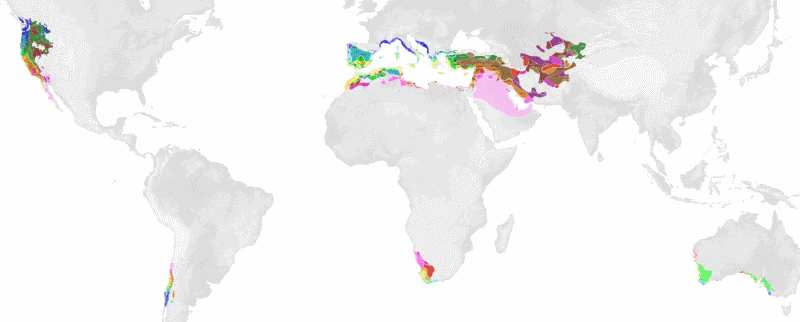
Click here for a larger version of the map.
Here are the regional maps:
(Note: The larger versions of the maps are up to two megabytes in size. They may be slow to download if you're on a dial-up connection.)
South Africa
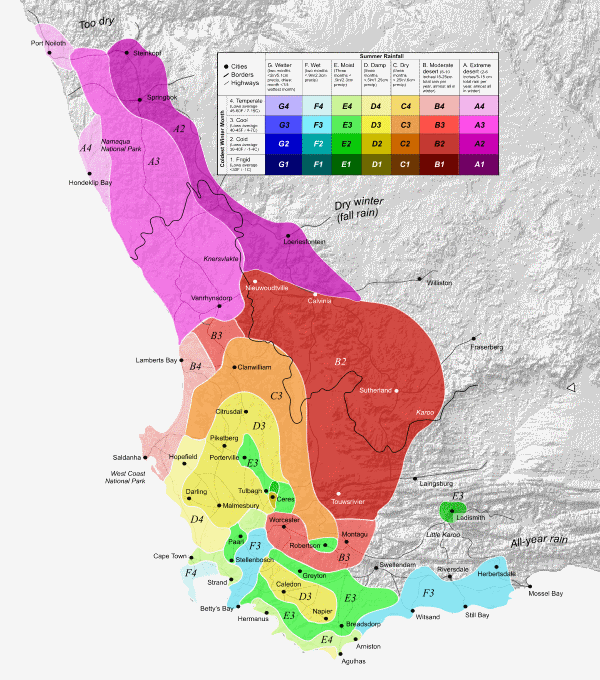
There are (broadly speaking) three summer-dry areas in South Africa with different rainfall patterns. The southern tip of Africa, extending from Cape Town east along the coast, has relatively moist summers with a relatively short summer drought. Those are the green and blue areas you see on the map.
The west coast, from just north of Cape Town up to Clanwilliam, has longer and drier summers than the south. Those are the orange and yellow areas on the map. The climate here is a bit more like California and parts of North Africa. To the north and east, the red and purple areas are summer-dry deserts with similarities to northern Chile. They're not usually included in maps of "mediterranean" South Africa, but they include important bulb centers like Nieuwoudtville.
Australia

The map of summer-dry areas here is dominated by greens and blues, meaning they get a bit of summer rainfall in an average year. Along the coastlines are strips with very light color, meaning they almost never experience freezing temperatures. Note the very thin strip of mediterranean climate along the south-western coast near Esperance. If you go inland even 20 km, the amount of winter rainfall drops off so much that it's hard to classify the local climate as mediterranean. There are two summer-dry desert areas, one near Carnarvon on the west coast, and the other west of Fowler's Bay on the southern coast. But most of the desert areas in Australia have almost no rain at all, or there's no seasonality to the rain that they get, so they're not included in this map.
Chile
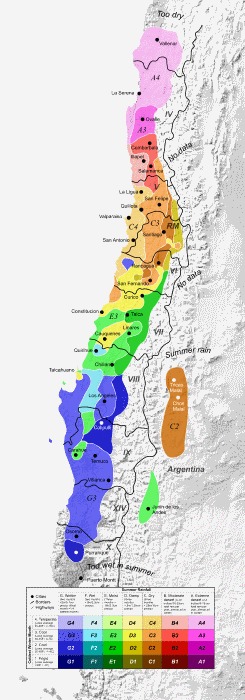
The Andes Mountains restrict the summer-dry climate to a relatively narrow strip along the coast, although there are a couple of summer-dry pockets to the east in the rain shadow of the Andes. In general, the further south you go, the shorter and milder the summer drought becomes.
The weather data available online for Chile is sparser than for other countries, and in particular there is almost no weather information for the Andes themselves. I think there are probably some strips of cold summer-dry climate in the mountains to the east of the zones I've drawn, but I can't find any data to document them, so I left those areas blank.
Mediterranean Basin
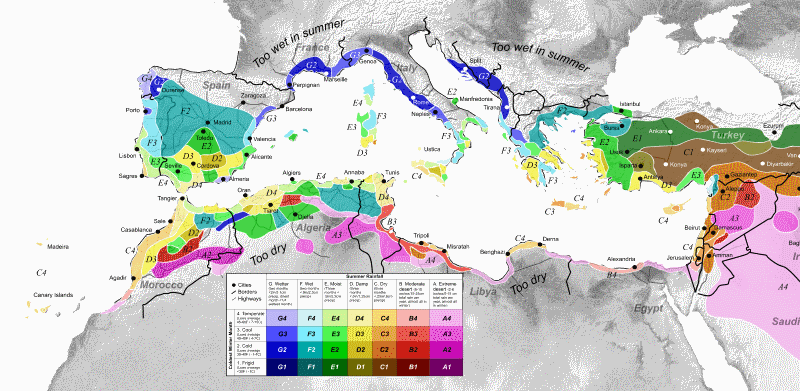
The combination of mountains and the Mediterranean Sea makes for a very complicated picture. The northern Mediterranean coast is generally blues and greens, meaning they tend to get some summer rain. In fact, parts of the coast, such as the area around Barcelona, get so much summer rain that I don't think you can call them summer-dry at all, even though they are officially classified as "mediterranean."
The southern Mediterranean (North Africa) is yellow and orange along the coast, meaning it's dryer than the north. There are splotches of blue and green where the Atlas Mountains produce higher rainfall. Then to the south of the mountains, in their rain shadow, are deserts. As you move east along the coast of North Africa, Libya and Egypt have narrow strips of summer-dry desert along the edge of the water. The eastern Mediterranean is mostly oranges and yellows, meaning it's close to desert conditions, and much drier in summer than the northern Mediterranean.
Inland Turkey is filled with dark colors, meaning it gets very cold in winter, but is summer-dry. These areas are not classified as mediterranean, but they're an important homeland for many bulbs, some of which require cold storage in winter.
Central Asia and Middle East
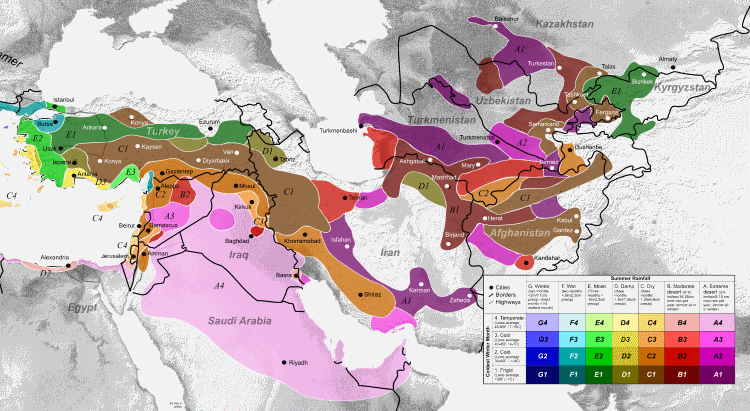
The Middle East and Central Asia are not classified as mediterranean, but they have huge summer-dry areas, some of which are important bulb territory. Much of Saudi Arabia and the area around the Persian Gulf is extreme summer-dry desert with mild winter temperatures (light purple). Inland Central Asia, meanwhile, is dominated by dark browns and purples, indicating very cold summer-dry deserts. This is the homeland to many Tulip species. If you live in a mild climate and you wonder why you have to store tulips in a refrigerator in order to get them to bloom, this is why.
The combination of mountains, seas, and lowlands makes the climate in this area very complicated, and there are relatively few weather stations. So the zones I drew here are approximate.
California
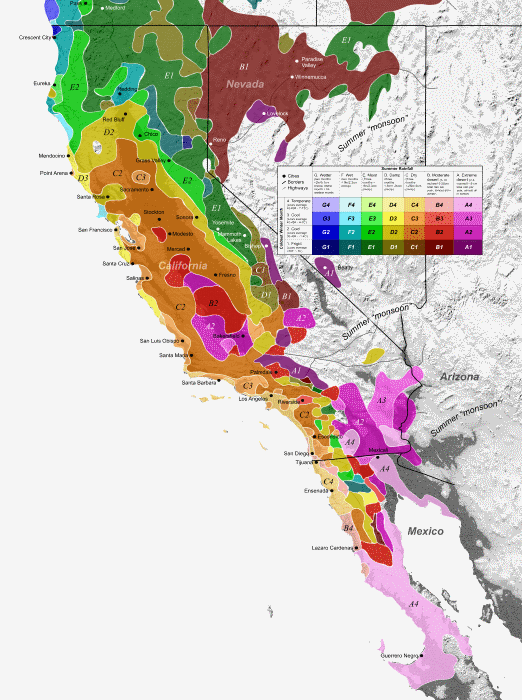
In California, as in Europe, the combination of ocean and mountains makes the weather very complex. At the southern tip of the state of California, extending down into Baja California, is an area of summer-dry desert (purple zones on the map). In the Baja peninsula this desert, sandwiched between oceans, has mild temperatures (light purple). In southeastern California it's dark purple because the desert there is further inland and gets a lot colder in winter. In northern Baja there is also a patchwork of other colors in the center of the peninsula, where the mountains produce more rainfall.
Much of southern and central California is orange and yellow, indicating near-desert rainfall with relatively long dry summers. The colors are dark; California gets a fair amount of frost, especially away from the immediate coast. A band of dark green marks the Sierra Nevada mountains, which freeze under snow cover in the winter. Overall, this is probably the coldest of the mediterranean regions, and in California one of the driest.
To the east, in the rain shadow of the Sierras, many of the mountain ranges in northern Nevada are cold summer-dry desert.
Pacific Northwest
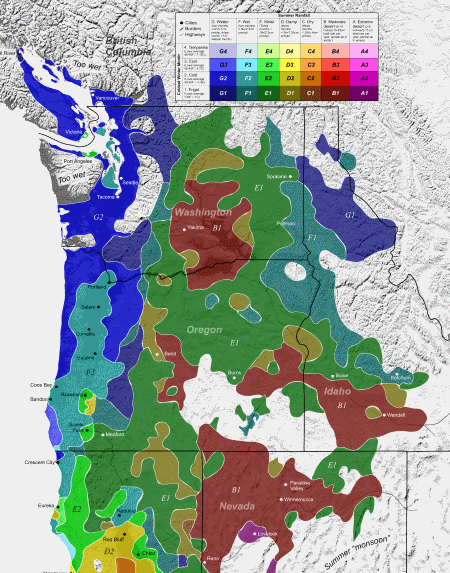
North of Red Bluff in California, all the way up to southern British Columbia, is a band of green and blue. You may be surprised to see these areas mapped as summer-dry, but they have a pronounced summer drought and a rainfall pattern similar to areas of France and Italy that are considered mediterranean. They are also the home to substantial numbers of bulbs, so they belong in any map of summer-dry bulb climates. Winter temperatures in the Pacific Northwest can be cold, especially as you get away from the coast. To the east are very large summer-dry areas reaching into Idaho, all of them cold in winter (dark colors), some of them officially deserts (dark red/brown). Many bulbs from these areas need to be refrigerated in winter, and do most of their growing in early spring, when the snow would be melting in their native climates. But like other summer-dry bulbs, they go completely dormant in summer.
Using the zones to help you grow bulbs
Here are a few examples of how to use the chart and maps:
Sparaxis metlerkampiae grows near Clanwilliam, South Africa. It's a cute little purple-flowered bulb that you might want to add to your collection. But how to grow it? Searching online, the only information I can find is that it needs "normal" water, grows in USDA zones 9-10, prefers loam soil, and should be kept in a greenhouse where not hardy. The information is so generalized that it's very close to useless.
Here's what you can do with the climate zones: Looking at the chart, I see that Clanwilliam is in zone C4, the same zone as Casablanca and Los Angeles. Now all of a sudden I know a lot. As a native Californian, I've never been to Clanwilliam or Casablanca, but I know the climate in Los Angeles very well. It gets about the same rainfall as San Jose (where I live), but is a bit warmer in winter. So I can give Sparaxis metlerkampiae the same watering I use for bulbs that are native to my area, but it'll need a bit more protection from cold.
Moraea lurida is a variable-colored species native to the area between Caledon and Hermanus in South Africa. On the map of South Africa, you can see that area is in zone E3, which the chart shows is roughly equivalent to Eureka, CA. That was a big surprise to me. Eureka is on the northern coast of California, in an area so damp that most Californians would tell you it's not even mediterranean. So the map says that if you want to grow Moraea lurida at my house you might want to start watering it in late summer (about two months before the rains start) and keep it moist through the end of spring. And sure enough, it responds very well to that treatment.
One more example. Calochortus nitidus is a bewitching purple flower with complex yellow and brown markings, and long hairs on the inside of the flower. It grows near Pullman, Washington, which is in zone F1: extremely cold winters, and relatively damp summers. A PBS member growing it in zone D3 could not get it to bloom until she started watering the dormant bulbs in summer. Someone in a warmer zone might need to refrigerate the bulbs in winter as well.
Here are some interesting climate siblings:
Santiago, Chile; Jerusalem; and San Luis Obispo, California (zone C3). Near deserts with occasional frost.
Tehran, Iran; Palmdale, California; Rancagua, Chile; and Nieuwodtville, South Africa (zone D2). All are moderately dry deserts that get fairly cold in winter.
Yosemite, California and Ankara, Turkey (zone E1). Yosemite is a valley nestled in the Sierra Nevada Mountains. In winter its famous waterfalls freeze solid and there's usually snow. This underlines how cold it can get in inland Turkey. There aren't any summer-dry areas in South Africa or Australia cold enough to be in this climate zone.
Overall comments
- Winter cold. Much of summer-dry South Africa and Australia rarely see serious frost, whereas it's much more common in other summer-dry zones. That means people growing South African bulbs in areas that can freeze need to be careful about protecting their bulbs. For example, California occasionally experiences bitterly cold freezes in winter. In the 1990s there were heart-breaking stories of major South African bulb collections in California being wiped out by a sudden freeze. If you grow South African bulbs in one of the areas that can get cold snaps, you should have a contingency plan to protect your bulbs in a climate emergency. That can be as simple as having a tarp you can throw over them and a couple of strings of incandescent Christmas lights to provide a little bit of warmth under the cover.
- Summer dryness. Parts of Chile, California, and North Africa get much deeper summer droughts than the northern Mediterranean and southern tip of South Africa. Bulbs from the dryer areas may need protection from excess rainfall when grown in other regions. Conversely, bulbs from the mild-summer areas may need extra water when grown in dryer regions. I live in San Jose, CA, which has a fairly long summer drought. I've often wondered why some of my South African bulbs sprout on their own in September, as much as two months before the rain starts here. I am starting to think those bulbs are expecting a longer rainy season. I've definitely determined that some bulbs native to the southern coast of South Africa grow more vigorously when watered in late summer. (Moraea polystachya is a great example; for best growth I have to start watering it in August.)
- South Africa and Western/Southern Australia have the mildest climates. Compared to the other mediterranean regions, they are a bit warmer in winter and have less severe droughts in summer.
- California's mediterranean climate may be the hardest on plants. It generally has colder winters and drier summers than the other regions.
- Central Chile's pattern is similar to California's, although temperatures are a bit milder in many areas.
What's missing from the maps?
The hardest part of making these maps was deciding what information to leave out of them. In some cases, the information needed was not available online. Also, it's hard to add more zones than we have now because the colors start to blend together and the maps become unreadable. Here are some of the other variables I would have liked to include:
- Summer high temperatures. Right now, the maps make it appear as if Rome and Seattle have similar climates. In terms of winter cold and summer rain they do (surprise!), but Rome is obviously quite a bit warmer in summer. The maps do not account for this. This would be a major flaw if you were using the maps to grow perennials, but summer-dormant bulbs are underground and insulated from summer's high temperatures, so I don't think it's a big drawback for our purposes.
- Total winter rainfall. The total amount of rainfall in an area is usually related to the severity of the summer drought, but not always. Some areas with short summer droughts get relatively low total rainfall in the winter, while others with similar summers are much rainier in winter. For example, Caledon, South Africa, is in zone D3. It has a mild summer, but its rainfall in winter is relatively low, with a yearly total of about 15 inches (38 cm). Zakinthos, on the west coast of Greece, is also in zone D3 because it has summer drought and winter temperatures similar to Caledon. But it gets heavy rainfall in winter, with a yearly total of almost 38 inches (97 cm).
- Infrequent deep freezes. The maps do not account for the occasional deep freezes that descend on California and parts of Europe, but not on Australia and South Africa. These make a huge difference in long-term plant viability, especially if you are growing tender bulbs or subtropical trees.
- Fog. PBS members Jane McGary and Loring Manley pointed out that fog is an important part of he climate in some summer-dry areas, including parts of coastal South Africa, Chile, and California. Jane writes of Chile:
- Local geography. Many weather stations are based in towns and cities where temperatures can be artificially high. Nearby hills and mountains could have much lower temperatures and higher rainfall. The maps can't capture those details because they are not recorded by the weather stations.
- Tropical summer-dry climates. Some parts of the tropics have dry summers, but I decided not to include them in these maps because conditions there are so different from the other summer-dry climates. For example, much of leeward Hawaii has dry summers, but average winter low temperatures are over 60 °F (15 °C). The extreme eastern tip of Brazil also has an area with relatively dry summers. Because these areas don't have the cool night-time temperatures that most summer-dry bulbs expect in winter, their seeds often won't sprout, and the bulbs may rot. Map of summer-dry Hawaii. If you look very closely at the map, you'll find a couple of small spots on the Big Island and Maui that have summer-dry climates cold enough to fit into our zones. These spots are on the leeward slopes of volcanoes where the elevation results in cooler temperatures.
- Soil types. Parts of western Australia have sandy soils that drain very rapidly, while the soil in much of California is clay. This makes a huge difference in a plant's tolerance of summer moisture. Unfortunately, the soil information available online is not detailed and comprehensive enough to include in these maps.
I'll do my best to continue improving the maps in the future, but as Jane McGary pointed out, there is no substitute for going to a place and seeing in person how its climate operates. Any map is just an abstraction and can't convey all of the details of a local climate. So please use these maps in the interim until you can make a visit to these places in person.
What about winter-dry climates?
The other major bulb-growing climate in the world is places with drought in winter. These areas include eastern South Africa and central Mexico. They're home to many beautiful bulbs. If anyone wants to create a zone system for the winter-dry climates, I'd be glad to advise them.
Some gorgeous bulbs native to the world's winter-dry climates:
Click here information on how the maps were created
How the maps were created
- Using an online weather site (see list below), pick a weather station and determine which climate zone it's in.
- In a drawing program, paste a map of the region. Then draw a dot in the appropriate color on the location of the weather station.
- Repeat this process until you've plotted all the weather stations in an area.
- Draw lines surrounding all of the stations that fall in the same zone. Wherever possible the lines should follow local topography. For example, if a weather station in a valley reports a certain level of rainfall, assume that the whole valley had the same rainfall, but not necessarily the mountain next door.
- Continue this process until you find weather stations that are not summer-dry. These are the outer boundaries of your map.
- When the zones have been drawn, erase all of the dots marking the weather stations.
- Add labels for cities, states, and countries. Add lines for borders and major highways.
- When all of the zones have been drawn, replace the underlying map with a Space Shuttle radar topography map of the region, converted to grayscale and lightened so the zones, cities, and roads can be seen.
What all of this means is that the maps are approximations. In areas where there are relatively few weather stations (Central Asia, for example) the maps are very approximate.
Space Shuttle radar maps are used courtesy of NASA/JPL-Caltech.
Click here for sources of weather data
There is a huge amount of climate data available on the Internet. Lee kindly pointed me to some of it, and I found a lot more.
World
WorldClimate.com
Weatherbase.com
ClimateCharts.com
BBC Country Weather Guides
Western US
Western Regional Climate Center (Click on the map.)
Western Canada
El Dorado Weather
South Africa
South Africa Explorer (A nice set of clickable maps.)
Chile
LeVoyageur
Australia
Bureau of Meteorology (Yet more clickable maps.)
Department of Agriculture and Food
Europe
EuroWeather
Maps and commentary by Michael Mace, San Jose, CA. I hope you'll find these maps useful. No climate-classification system is perfect, but if the maps help you make better guesses about how to handle a particular bulb, they have served their purpose. Your comments and questions are welcome. You can reach me through the PBS contact page.
